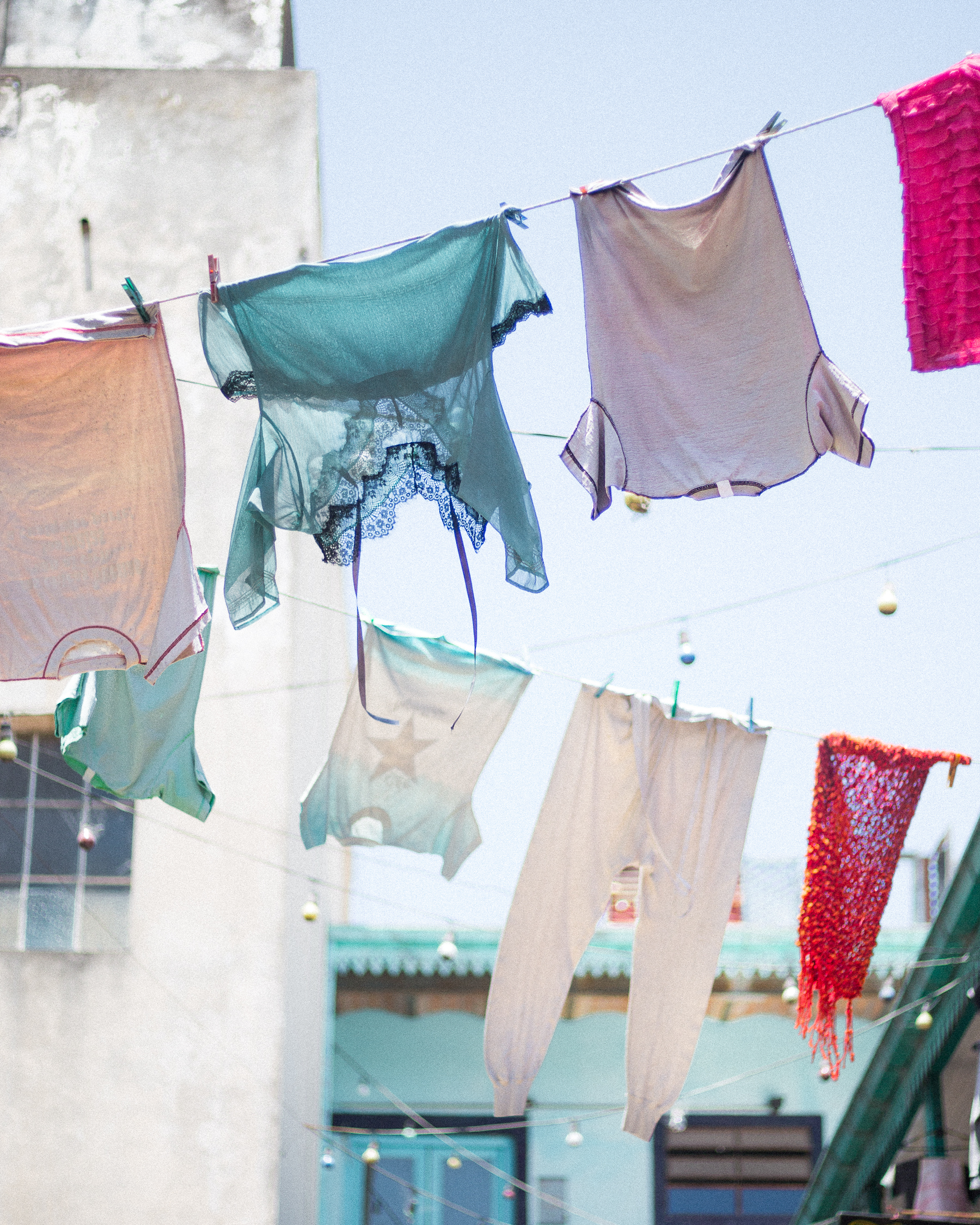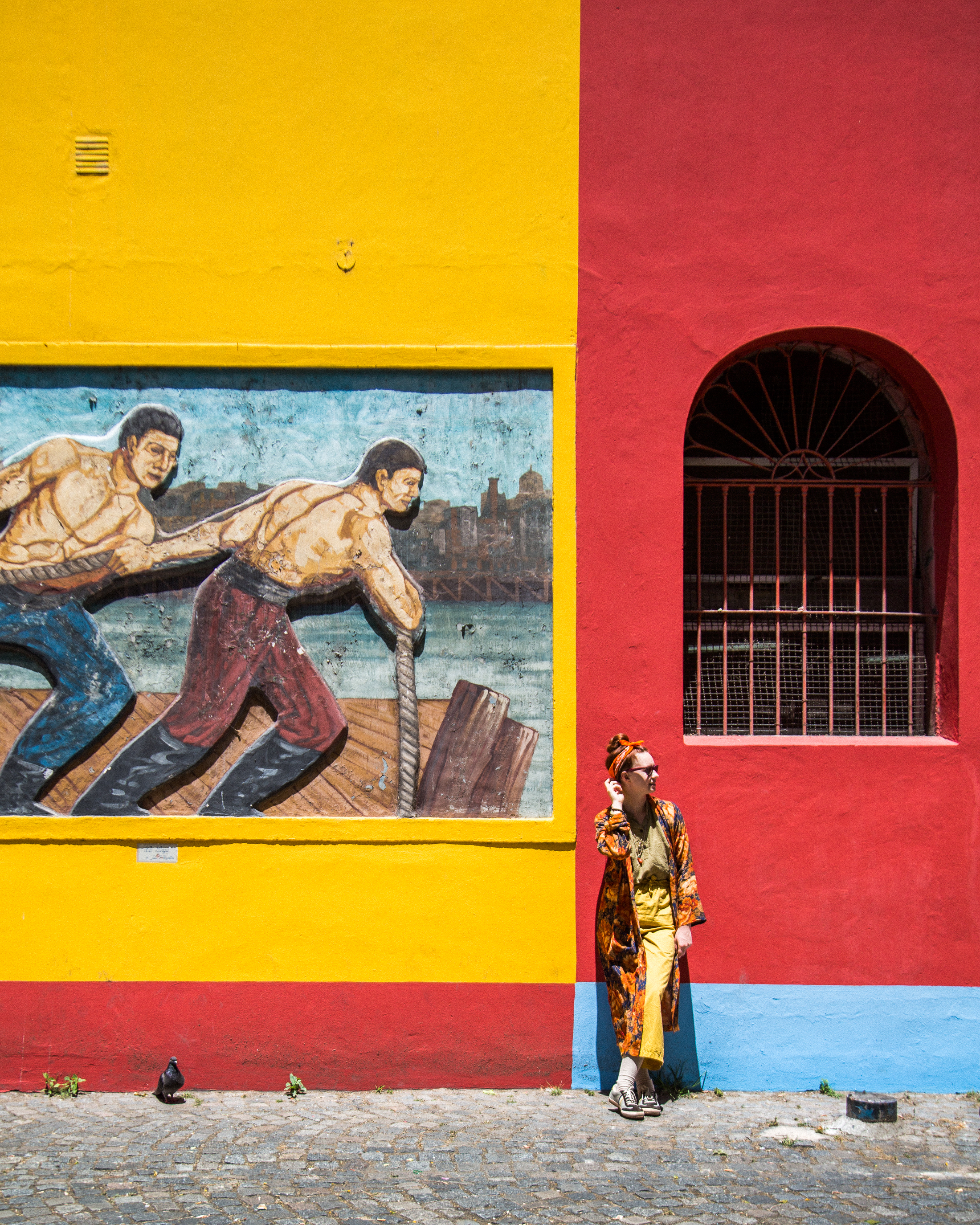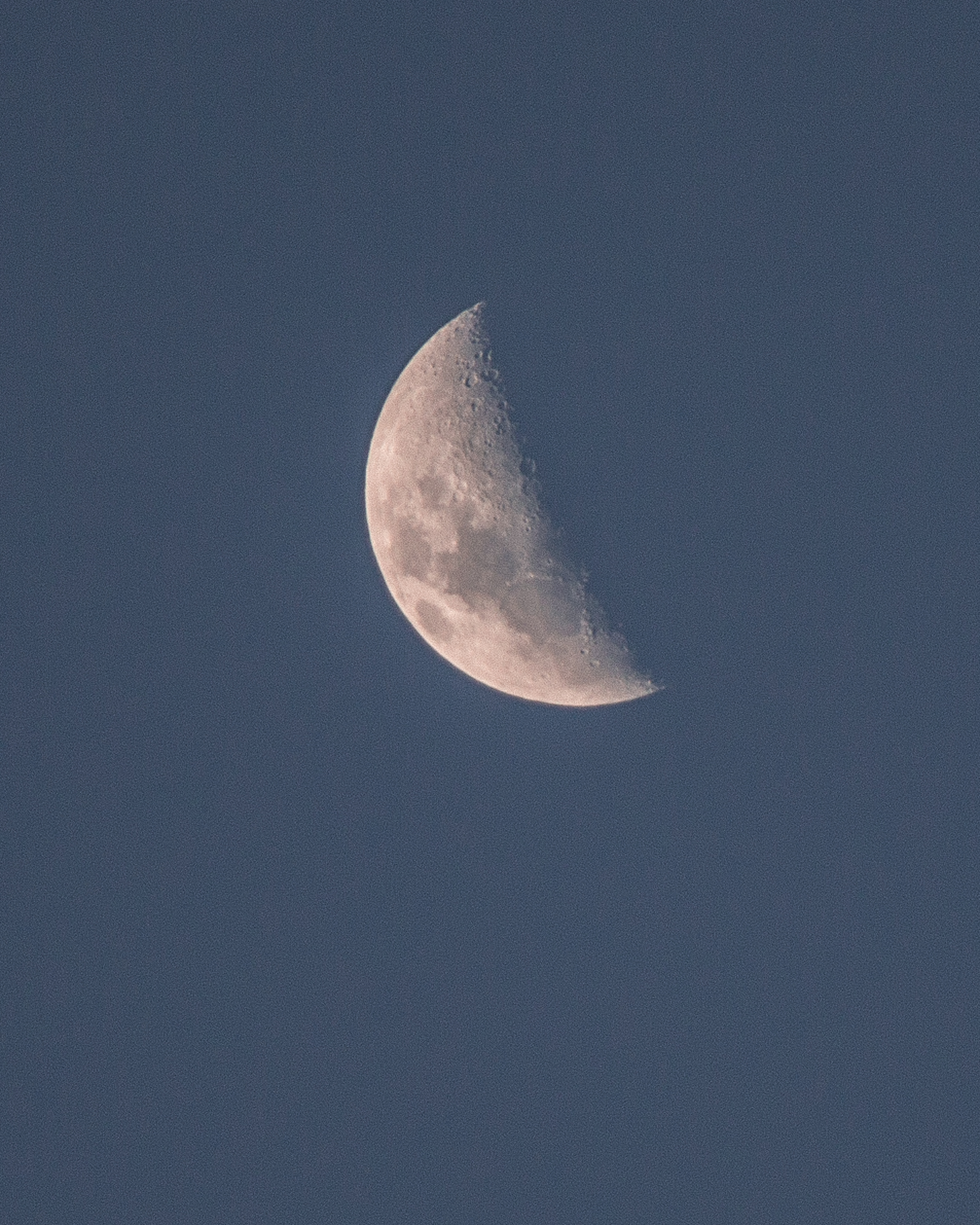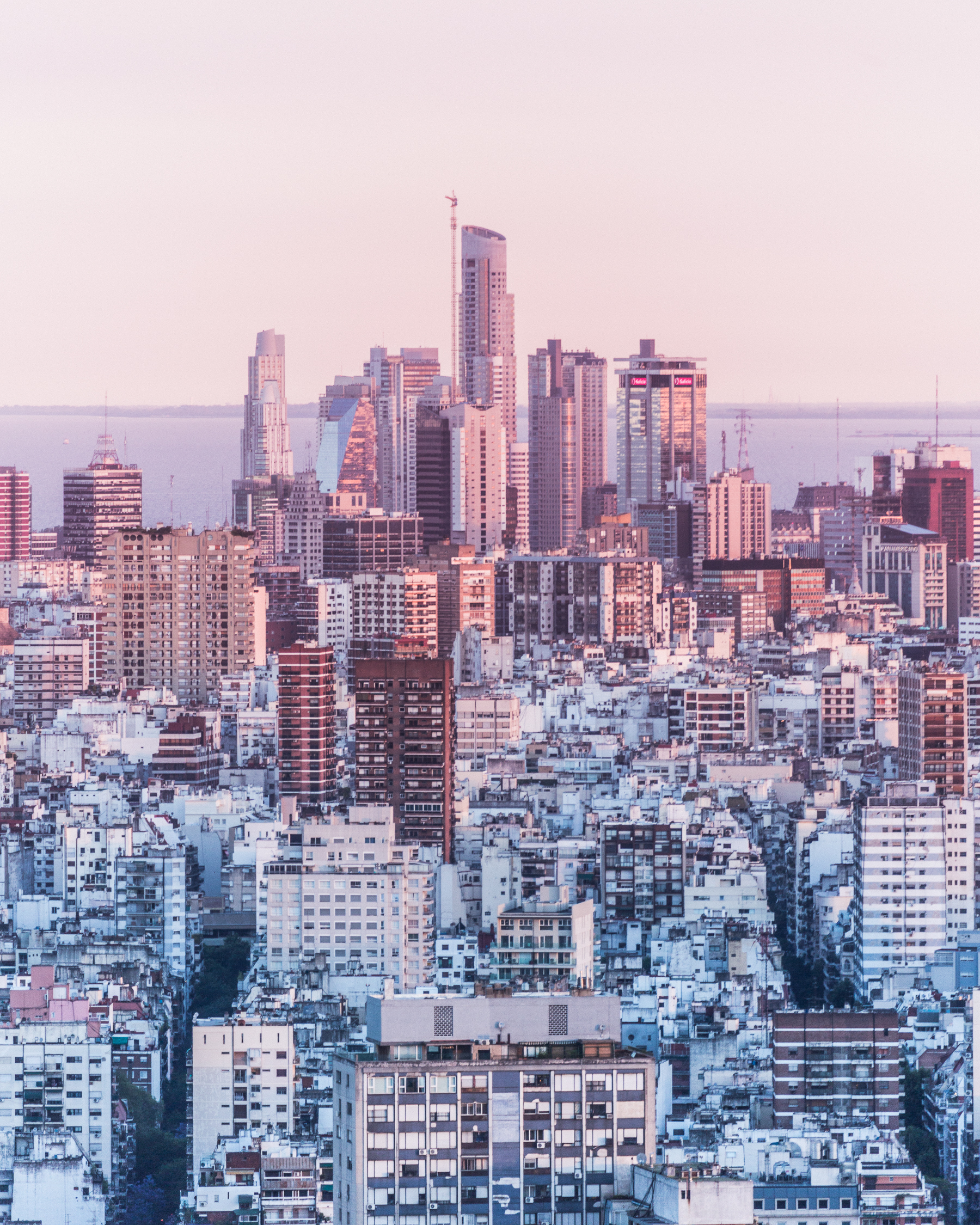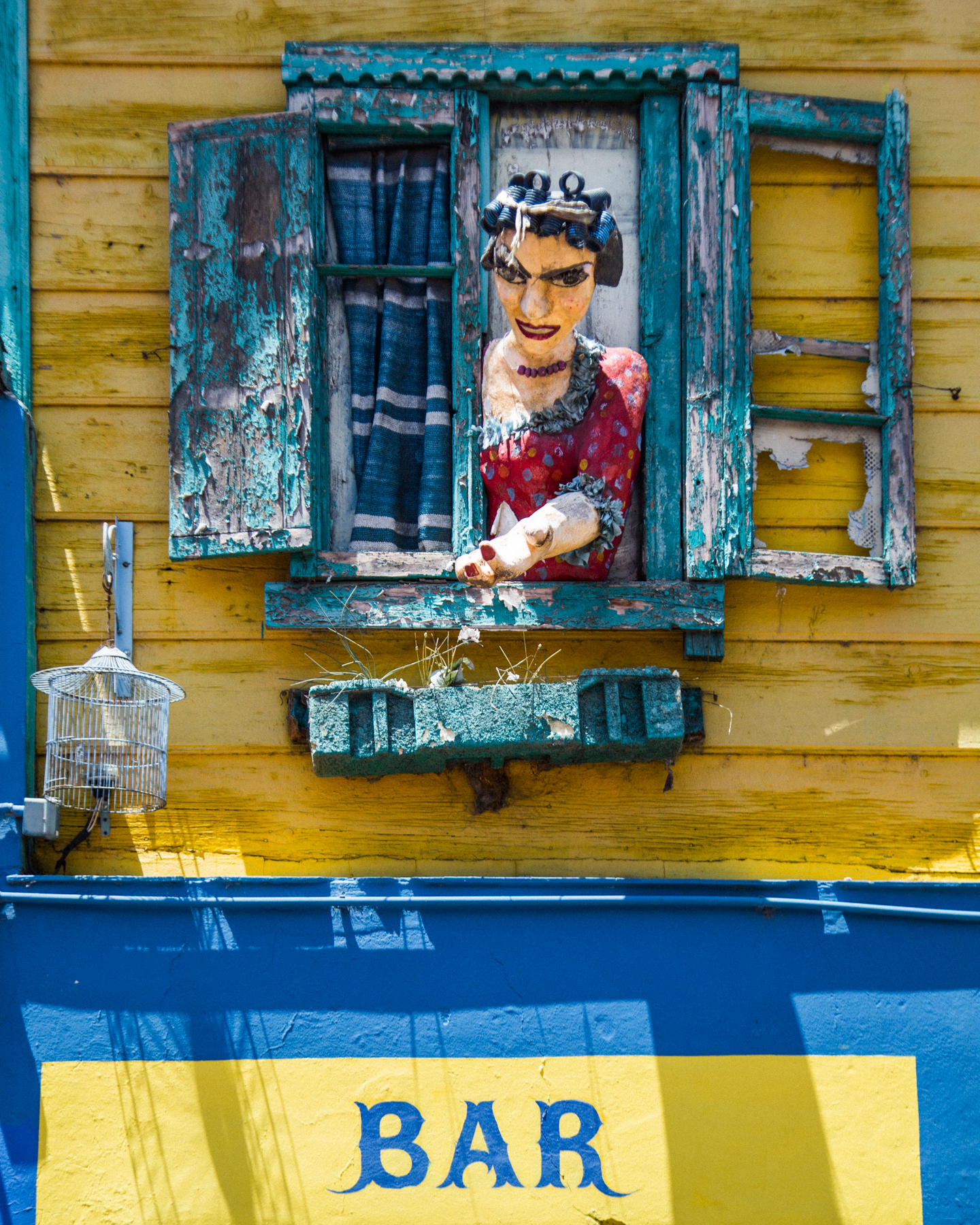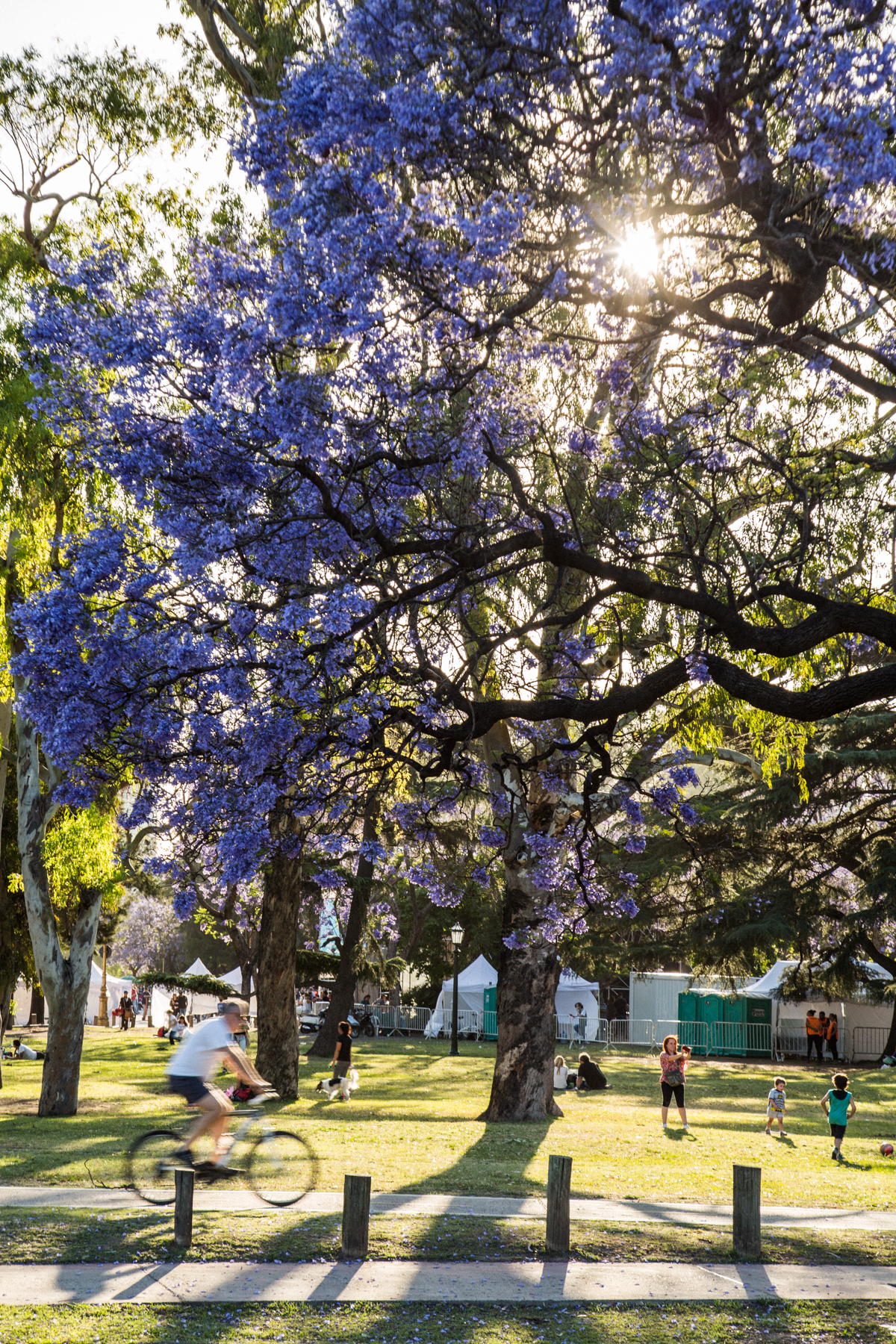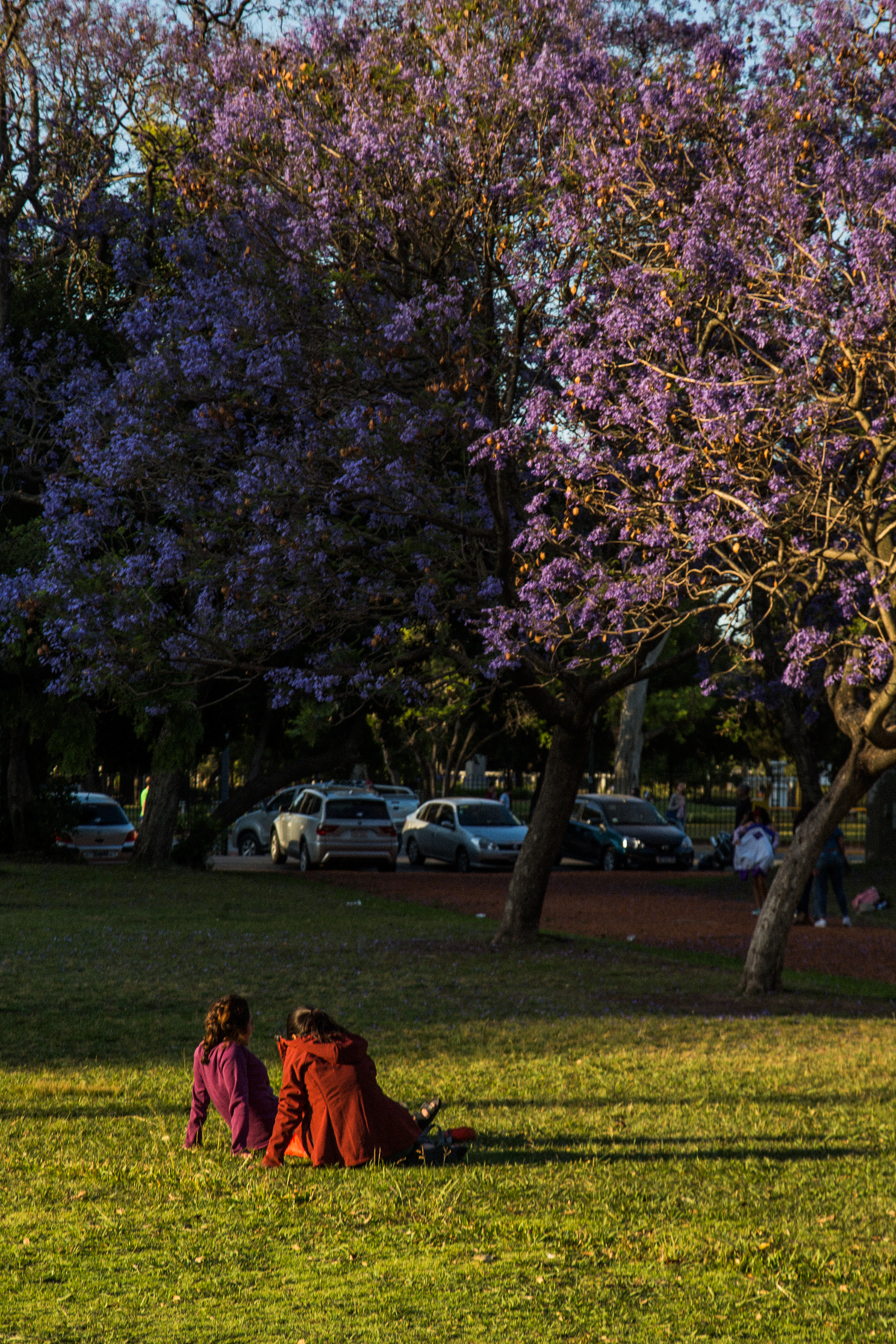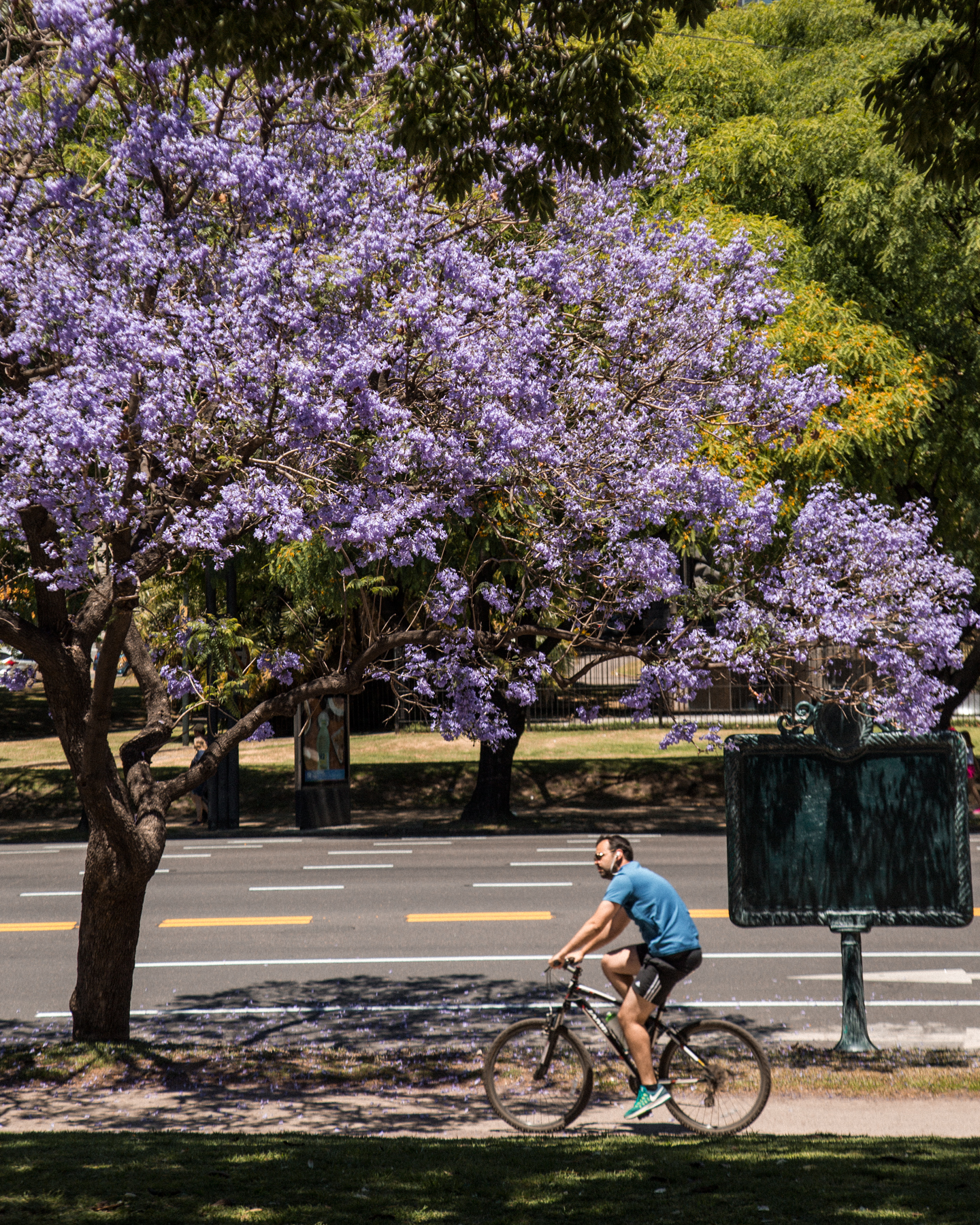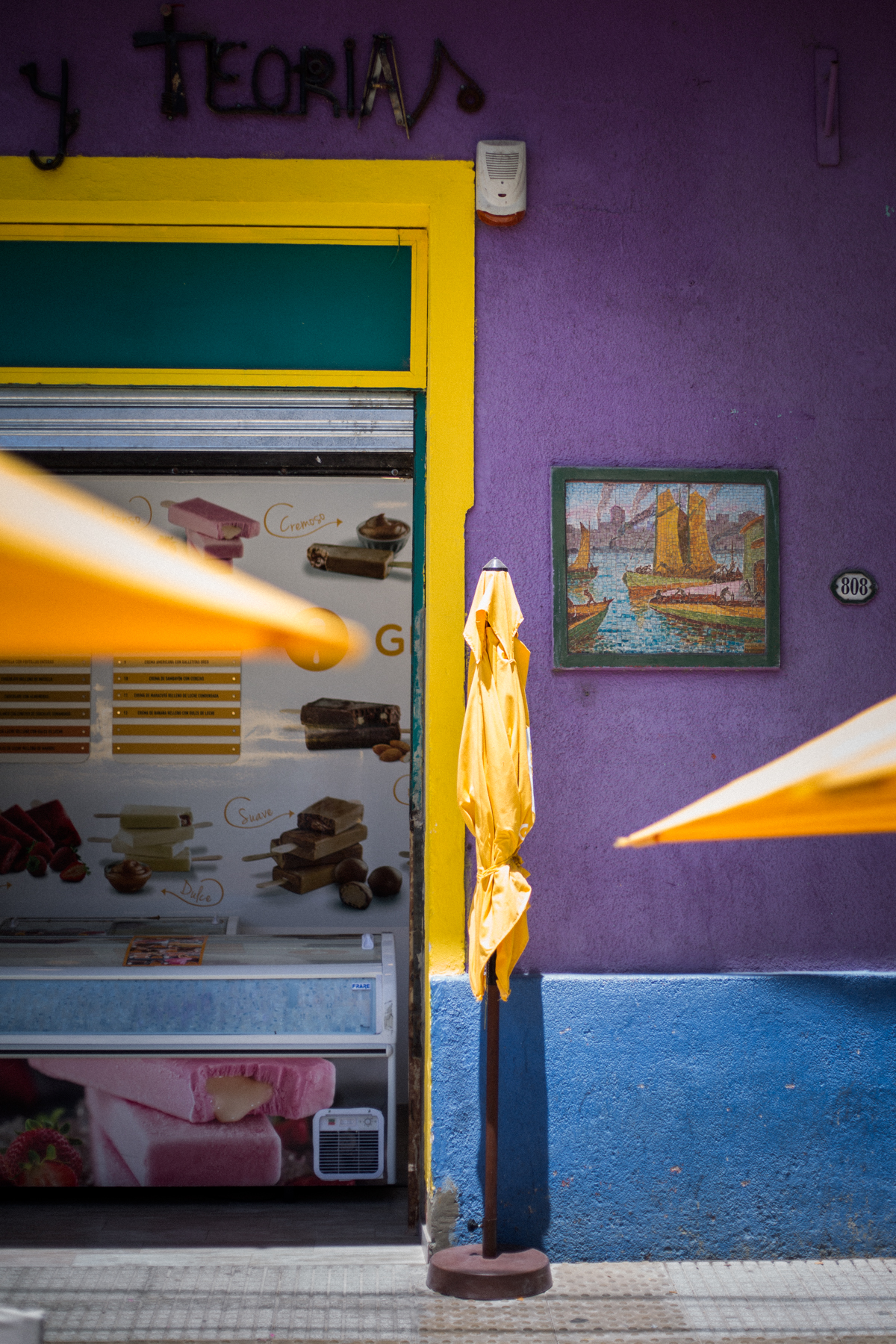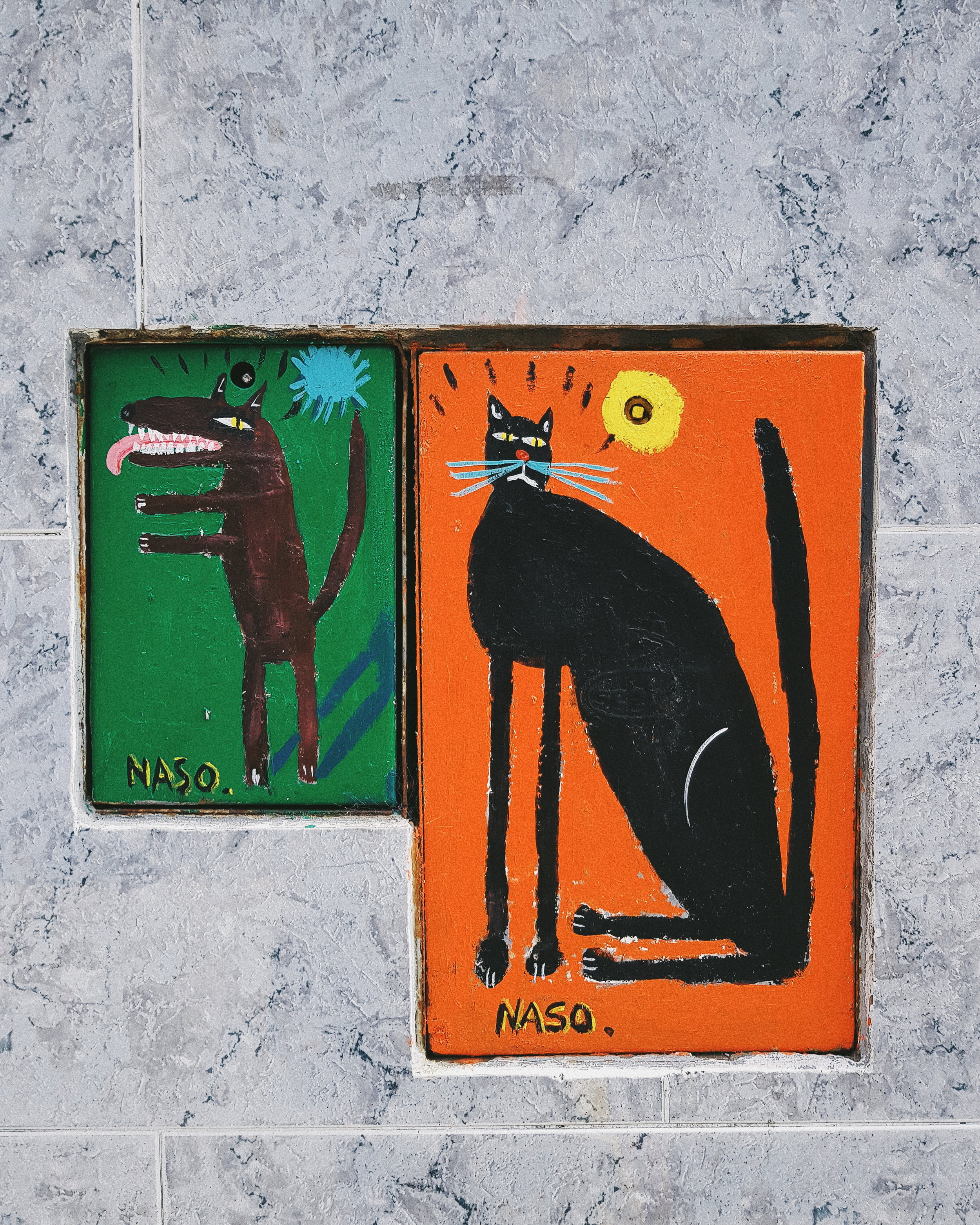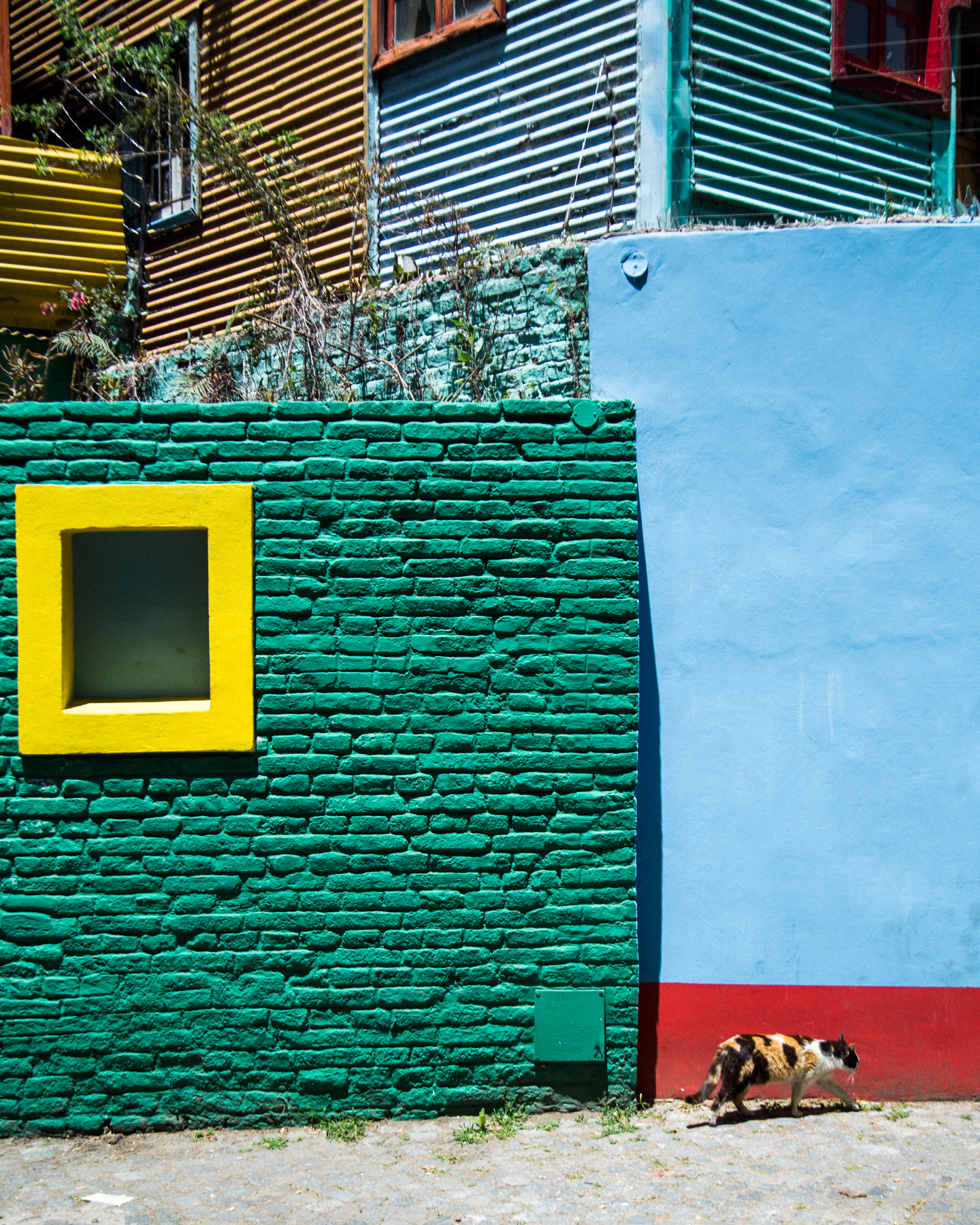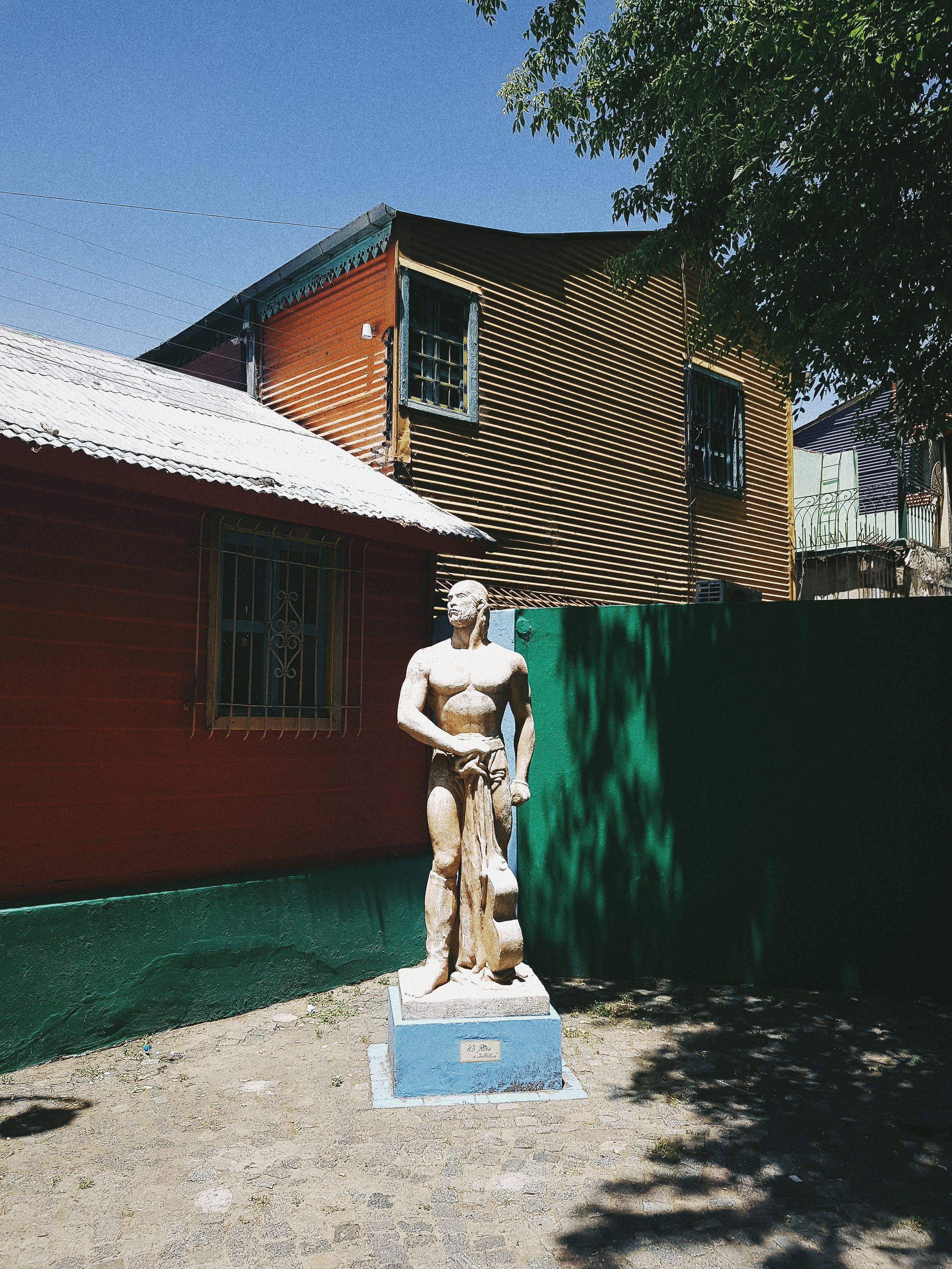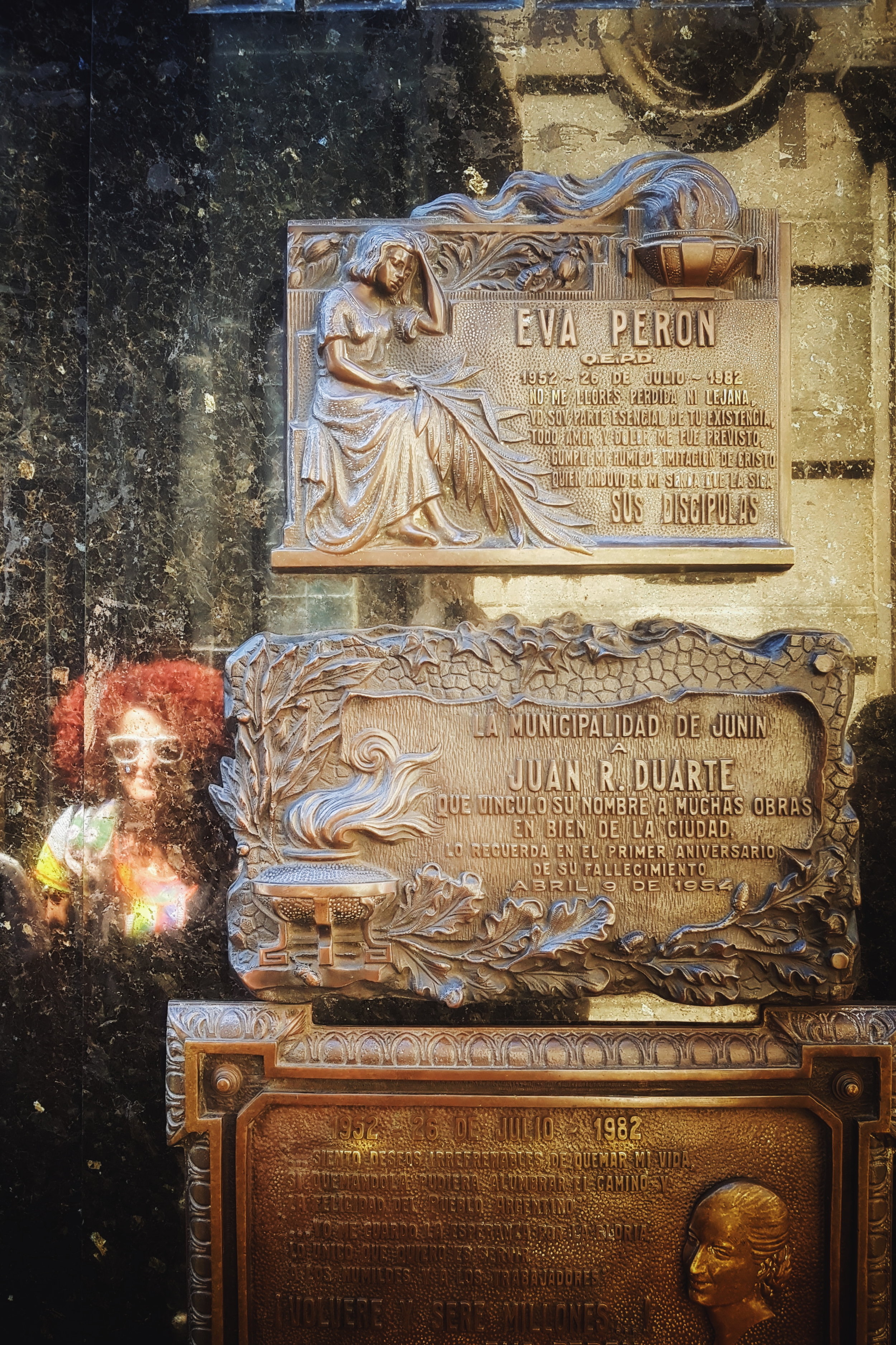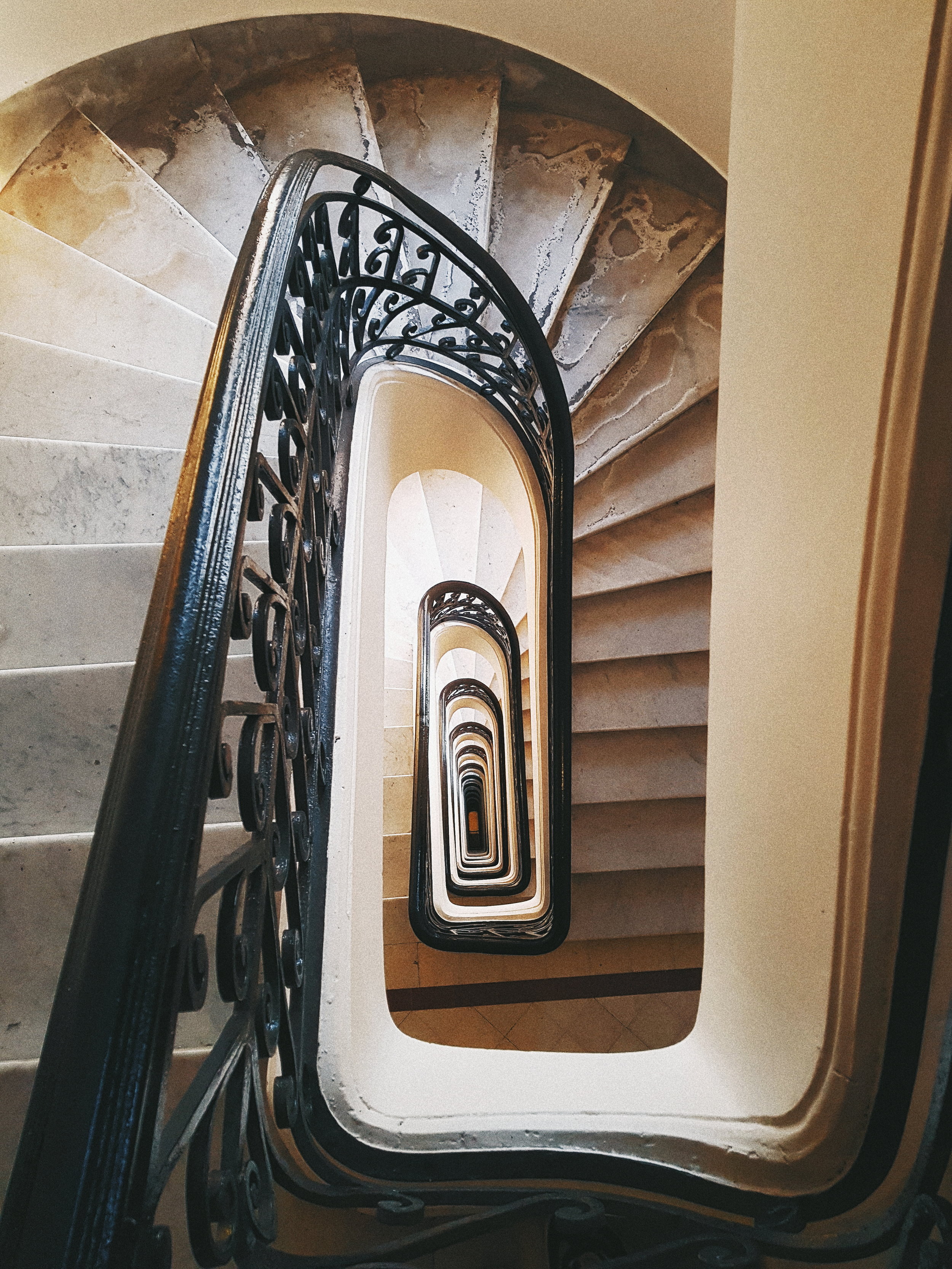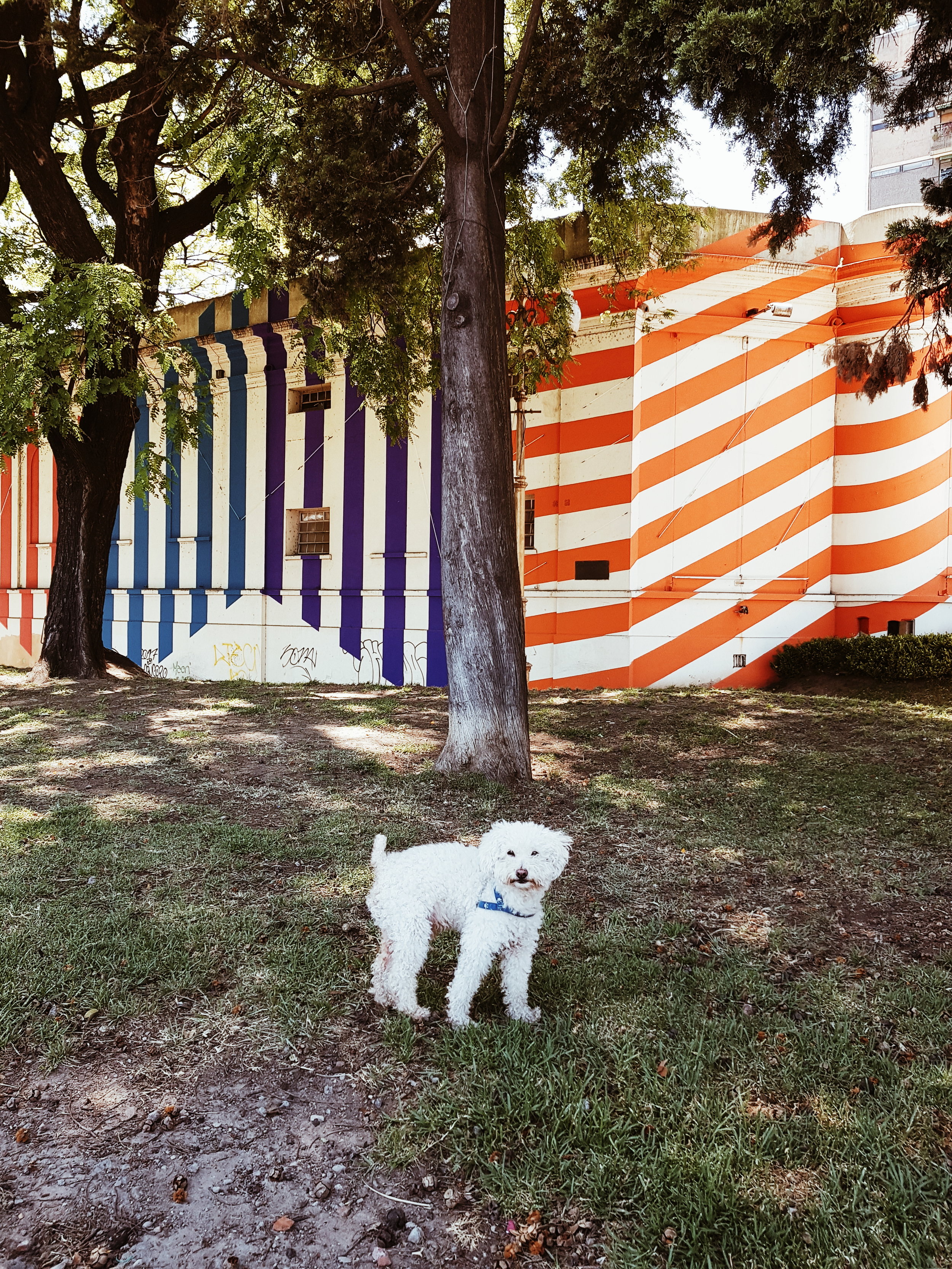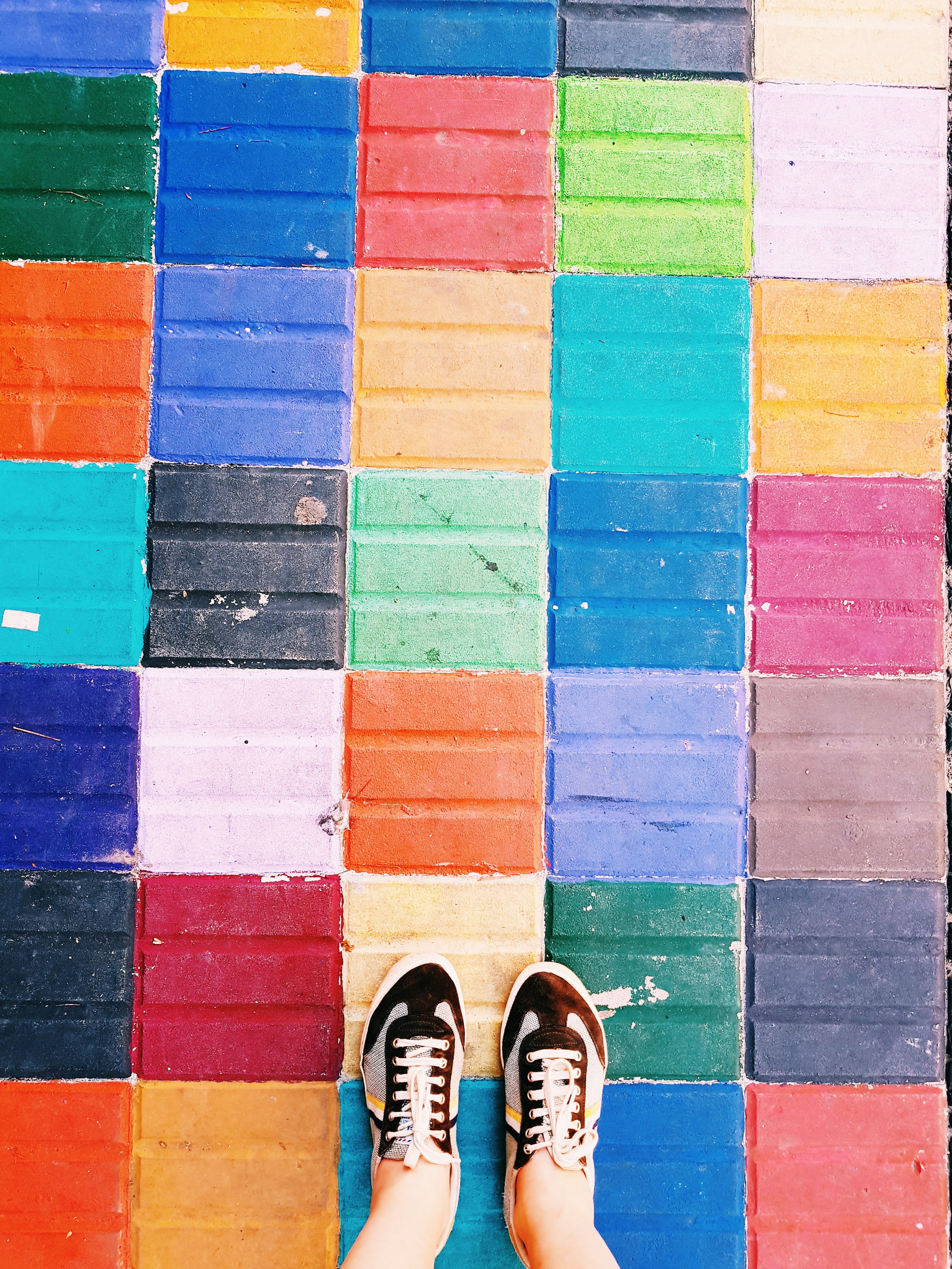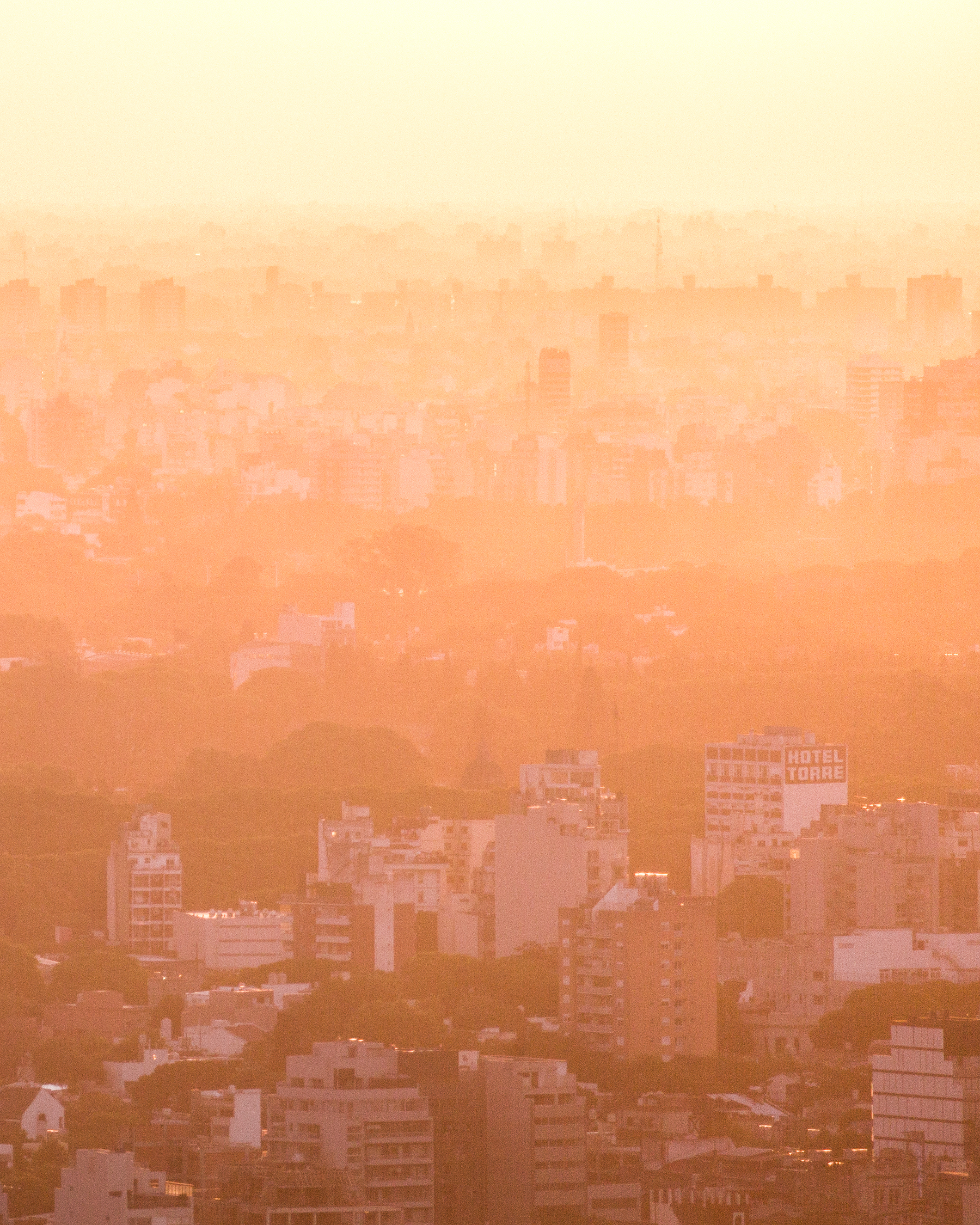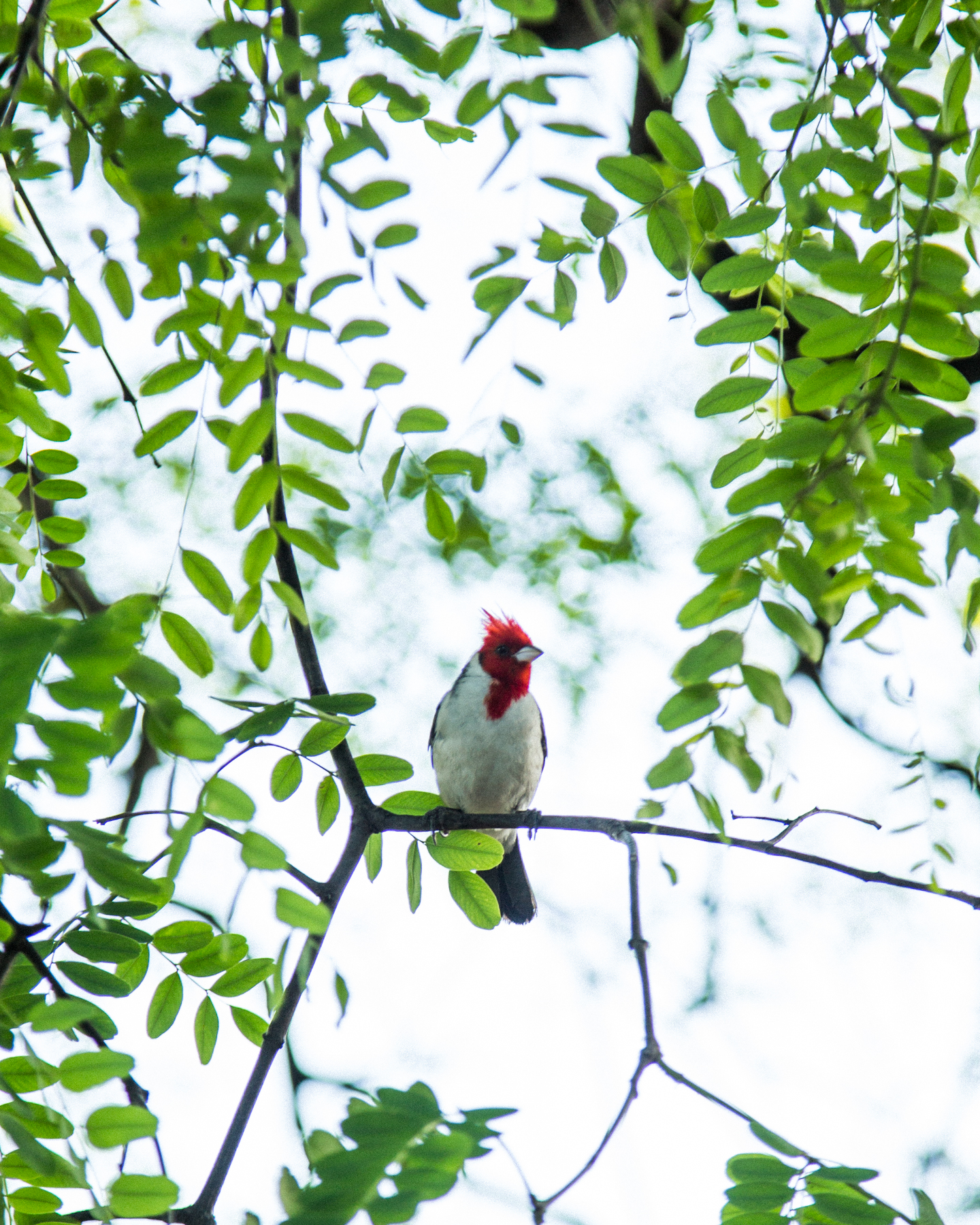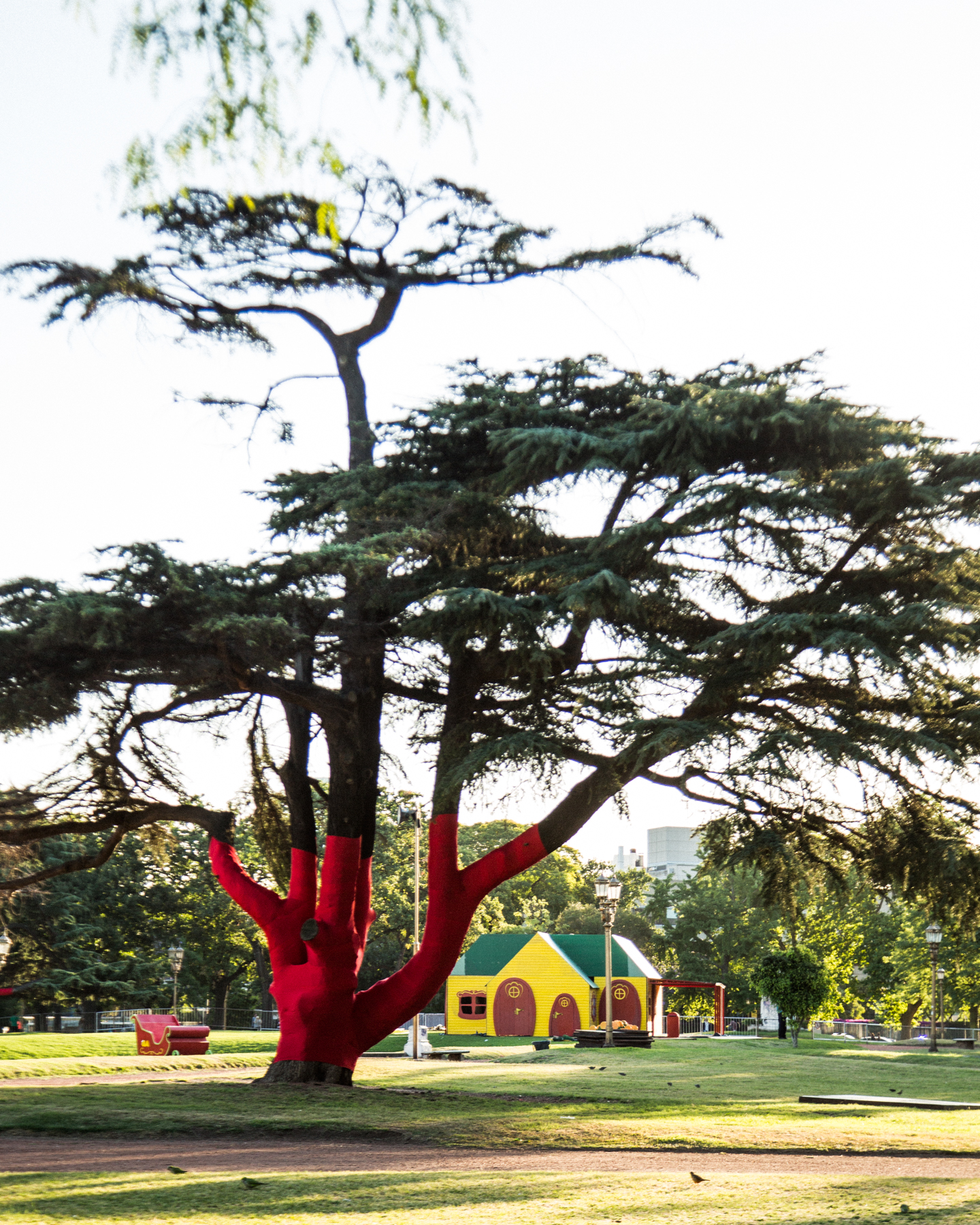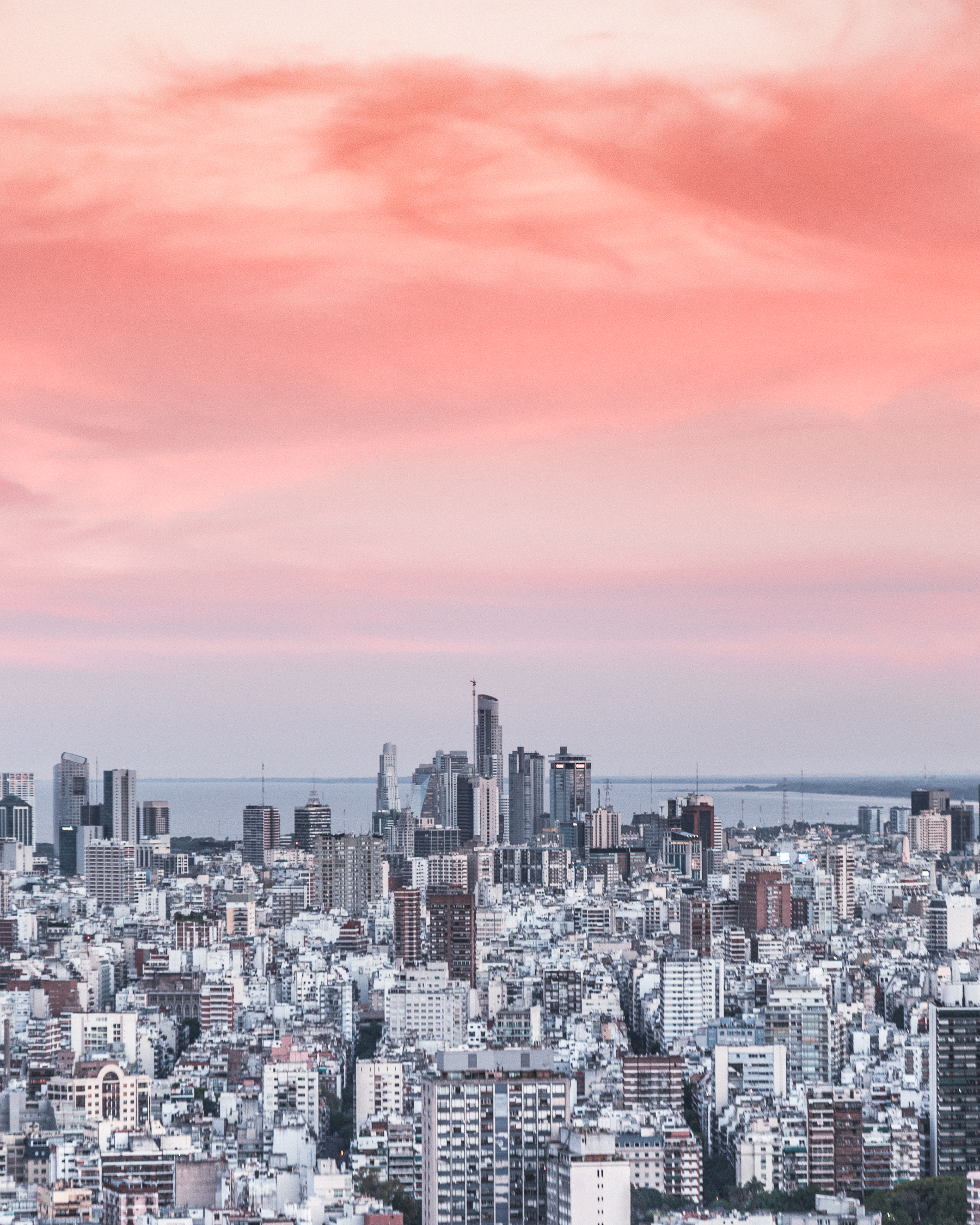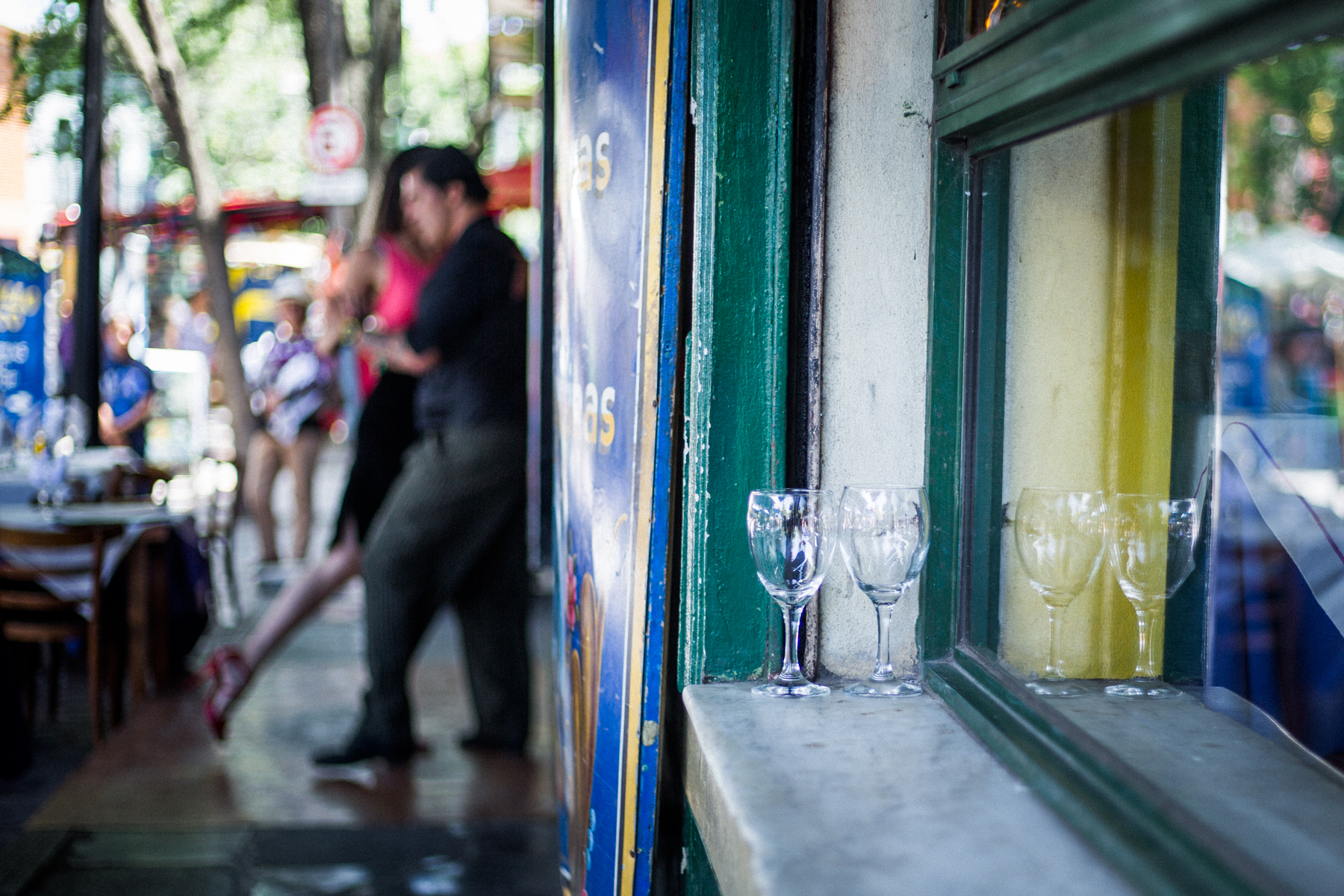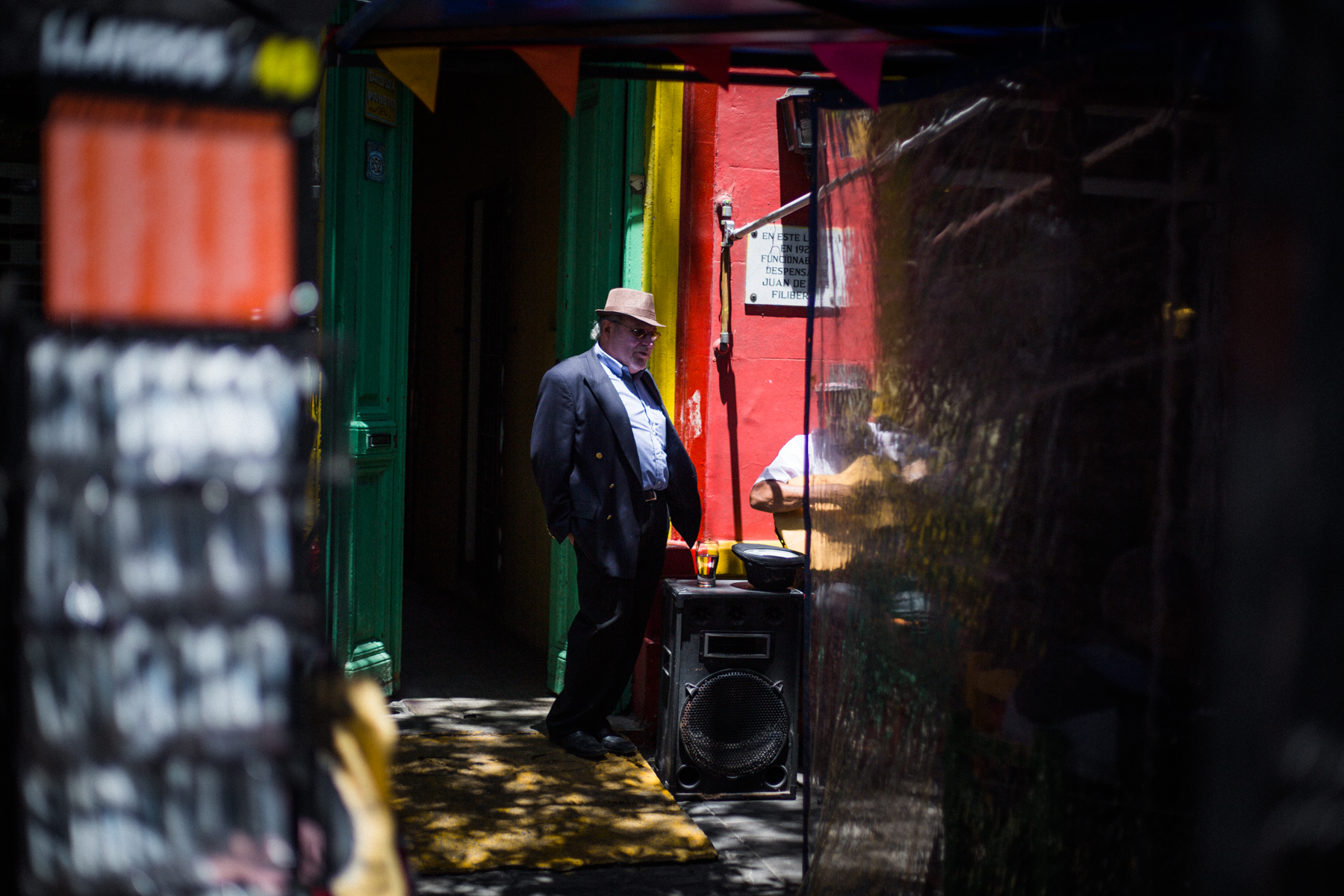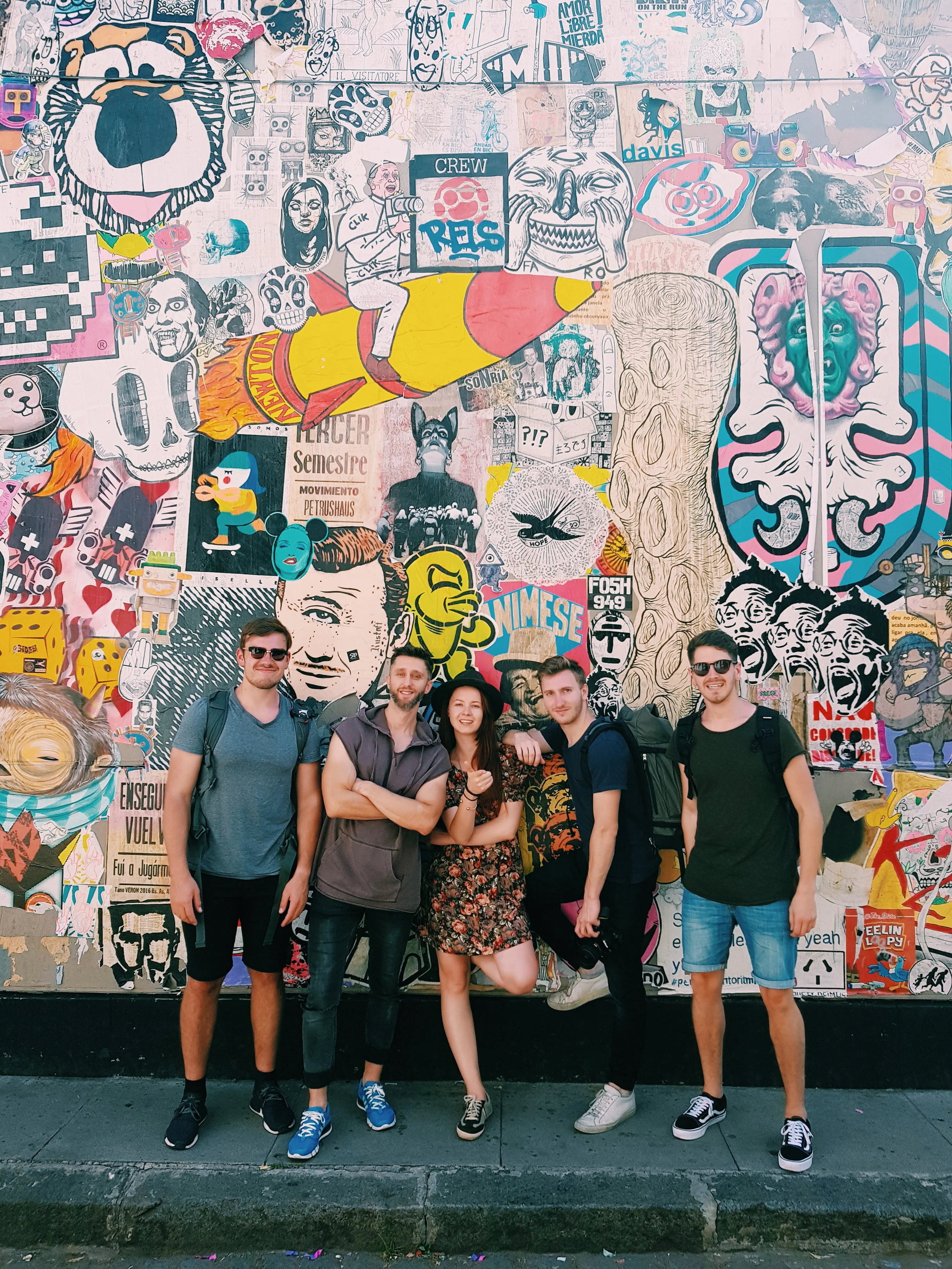3 days in Buenos Aires
Last year was rich in Bucket List travels for me. After 2 decades of dreaming about this place, I finally managed to visit the capital of Argentina for a couple of days.
Buenos Aires was everything I imagined and saw in the soap operas of my childhood. The most European South American capital, it met me with sun, amazing food, great vibes and lovely colors of a late spring. If you rarely travel across the equator, the simple fact that they have summer when we have winter is kind of mind-blowing. I honestly had to laugh, when people told me they don’t like celebrating New Year’s in the city because it gets too hot. Remember Berlin? After months of grayness and cold, I’ll take Argentinian “too hot” any time.
I went to Argentina as a part of small instagramers' group (other than me all male) with Buenos Aires being only a small part of our travel itinerary. Nevertheless, for me it was a definite highlight, since so many childhood dreams and memories were connected with this place.
The first thing which really surprised me about Buenos Aires (since I also visited other parts of South America, including Ecuador, Peru, Bolivia and Brazil) is how European-looking majority of the population is. Blue eyes and blond hair are as common on the streets as they are in Berlin and this is the 2d South American city (the other being Sao Paolo) where I easily mixed with the crowd. I am not going to get into history of colonialism and European immigration, but the consequences of these processes are quite obvious.
Streets in Buenos Aires have the European feel
The weather in late November-early December was perfect, with temperature ranging from 24-28C. November is also a peak season for the jacaranda trees blooming, so if you’d like to see the city in the blue-lilac-whatever shade of violet these flowers are in full gorgeousness – spring (or Northern hemisphere fall) is the time to go.
We stayed in the popular upscale neighborhood of Palermo – boutique hotels, fancy restaurants and lively nightclubs are concentrated here. I have to admit, that 3 days is not enough time to discover the city thoroughly, but what I saw – I enjoyed to the fullest.
Even though Buenos Aires is situated in a close proximity to the ocean, there are no decent beaches in the city other than Buenos Aires Playa beach on the shore of the Rio de la Plata. Generally, despite a long coastal line, Argentina is not the place to go for a beach holiday – even locals prefer to go North to Brazil.
Most tourists are attracted to the colorful districts of La Boca and artful San Telmo and for a good reason. La Boca, which used to be a rather poor working-class neighborhood, consisting mostly of early Italian immigrants, acquired cultural significance for its brightly pained houses and tango places. The famous tango “Caminito” (1926) composed by Juan de Dios Filiberto was inspired by the street of the same name in the heart of La Boca.
San Telmo is the oldest neighborhood in the city, famous for its art scene and a regular Sunday market. I really enjoyed strolling on the streets, looking at all the colorful facades, bookshops and cafes.
Street in San Telmo
Recoleta is a downtown residential neighbourhood, with a long history and European-inspired architecture. Here you can find the beautiful Recoleta cemetery, where Evita – Eva Peron, the most famous First lady and the Spiritual Leader of the Nation, is buried. National Fine Arts Museum as well as the National Library of Argentina can be found here as well.
Palermo, where we lived, is the biggest barrio or neighborhood in Buenos Aires, divided into many smaller areas, named quite distinctively Palermo Chico (“chic” Palermo), Palermo Viejo (“Old” Palermo), Soho, Hollywood etc.
Buenos Aires is the most visited city in the South America as well as the most well-to-do, ranked 93 in the list of cities around the world for the quality of life.
The city is also famous for its vivid theater scene (with over 280 theaters, it is also known as “the theater capital of the World”) as well as for the most bookshops per capita in the world.
I cannot avoid talking about food scene of course. Argentinean steak is world famous, but the city has a huge variety of restaurants, ranging from local to international cuisine. I’ve visited a few and was not once disappointed.
Lunch at La Popular, San Telmo
The places I went and can recommend are:
El Muelle – situated on the bank of Rio de la Plata in a beautiful mansion, which belongs to the fiherman's club (Club de Pescadores) it is a great place to eat sea food and enjoy the view of the river.
La Mar – easily the best ceviche I've ever eaten as well as one of the most popular restaurants in Palermo. Huge outdoor area, big portions and amazing fresh fish ceviche.
Chori – an upscale take on the traditional sausage sandwich.
Grappa Cantina – located in a huge ballroom, it is a nice place for a late dinner. Their sirloin stake was superb.
La Popular – colorful interior, international cuisine (we ate schnitzel) and huge portions
La Guitarrita and La Calle Bar – great pizzeria with a speakeasy bar tucked in the back. Try the Berghain cocktail for the touch of Berlin in the heart of South America.
Avant Garten – restaurant and a bar with a big outdoor area, which turns in a popular night hang-out spot.
We were lucky to get onto couple of taller structures in the city, to catch a glimpse of Argentinean capital from above. One, situated in a private residential building in Palermo Chico is unfortunately inaccessible to the general public, but another viewpoint – the top of the Palacio Barolo in the Monserrat district, is a great place to view the sunset over the city.
Palacio Barolo is also a beautiful place for a guided tour. Built in 1923 as an office building in a cosmology with Dante’s Divine Comedy and filled with Masonic symbols, it used to be the tallest building in South America. It is topped with a lighthouse, which was supposed to send light signals to its twin-brother – Palacio Salvo in the Uruguayan capital – Montevideo. Unfortunately, the Italian architect Mario Palanti didn’t take the curvature of the Earth into account, so physically it proved impossible to connect these two visually.
View of the Monserrat district from the top floor of the Palacio Barolo
Buenos Aires obviously has a lot of “mosts” in its description – most theaters, most bookshops, most European, etc. Let me also add the oldest subway system in the Southern Hemisphere as well as the oldest in the whole Spanish-speaking world, dated back to 1913. The Linea A is the historical one, with its station kept in the “belle-epoque” decorations. Another reason, why they call Buenos Aires “Paris of the South America”.
I was lucky and excited to go to a polo game, while I was visiting. It is the most popular sport in the country – after football of course. I find it quite weird and complex (hitting a ball with a wooden hammer, while galloping on a horse – what?) but Argentinians I talked to explained the popularity by the huge amount of horses and vast territories with green fields, which kind of made sense…oh well. It is not a cheap sport, since a price for a decent horse can be as high as $200K.
Another weird but popular thing in the whole Argentina is the tradition of drinking yerba mate on the streets. One can order this energizing drink in a café, but many people carry a special mate cup (calabash gourd), propped with a special metal straw (called la bombilla), as well as a package of yerba leaves and thermos of hot water, everywhere and prepare a drink on the go. I drank mate tea before, but never in an Argentinean way. For me it was similar to seeing an Italian carrying a machinetta around and cooking a cup of espresso while waiting for a bus.
I went to Argentina with a bunch of other instagramers and I was surprised to be interviewed by the biggest national newspaper – called accordingly La Nation. They described me as a “professional comedian” – which I proudly accept, even though I only had one stand-up gig by now. The interview and the article about influencers promoting Argentinean tourism was published in print and online, resulting in hundreds of mixed comments on social media. At least I’ve learned, that in the case of bashing people on Facebook Argentina is no different to any other country in the world=)
Generally, Buenos Aires met and acceded my already high expectations. I would love to go to the city for a longer period of time to explore its underground cultural scene.
For now this is it, but I will soon write another post about my experience in the Tierra del Fuego – literally the southernmost town in the world Ushuaia and its surroundings.
This picture of a baby I found at a flea market in San Telmo describes my feelings about Buenos Aires perfectly
3 days in Southern Bolivia
Last March I had couple of firsts. It is not what you think of course. Though for that matter, I don’t know what you think at all. This month I’ve seen the most beautiful sky in my life. In the middle of nowhere, southwest Bolivia, with no internet, mobile network or shower, I’ve seen a face in the clouds – and thought that since I am so far up in altitude, I must really be close to heaven.
This month I’ve been to another planet as well – the planet of salt and white clouds. I don’t think I’ve ever seen so much white in my entire life. If I imagined heaven, that would be the best depiction of its entrance.
We arrived at Uyuni; a small village with a market, church and couple dozen travel agencies in the early morning. The last two hours on the bus ride on-route were quite bumpy – since there are no paved roads to this remote part of the world. That remote part: in Bolivia’s southwest, the Potosi region.
After a quick coffee, which was surprisingly bad everywhere I went in South America, we headed to the travel agency of our choice – I bet they are all the same, providing basic services for a three-day tour around the salt flats and surroundings.
The three-day tour we booked was modestly price at $130, which after a short negotiation could have been dropped to as little as $80 for three days all-inclusive.
We ended up in an all-women group of six plus our nice local driver, who didn’t speak a word of English. However, luckily, my teenage obsession with South American soap operas paid off and I could ask basic questions and even understand 40% of the answers.
The driver packed our bags on the top of his four-wheel-drive, together with the gas for the whole trip – not so surprisingly; there were no gas stations on the way.
The first stop on the way was an amazing old train cemetery. Uyuni was a transportation hub, with trains carrying minerals from local mines to the Pacific Ocean ports. After the collapse of the mine industry in the 40s, many trains and railways were abandoned. Old trains remain a memory of the past prosperity and hopes.
The location would be more spectacular without the hundreds of tourists jumping around and taking selfies with a stick. I suppose though any beautiful place in this world is doomed the moment it is discovered or mentioned in the Lonely Planet guide.
Our next stop was an artisan market a few kilometers away from the start of the actual salt-flat – another tourist trap. Nevertheless, it had a small museum with huge statues of animals and people carved out of blocks of pure salt. Guess how many people tried to lick them.
After a stop at the market, the main part of our journey began. It was all absolutely amazing, with not a single boring moment in it. Skipping further superlatives and descriptions and accelerate on my story, here are the main stops on our three-day tour:
Salar de Uyuni
Arriving at Salar de Uyuni, the world’s largest salt flat is similar to arriving at an unknown, deserted planet. Spread for more than 4,086 sq. miles, Salar is the flattest place on Earth, with an average elevation of maximum one meter over the whole area. To put it in simple words, driving on the salt flat is like skating on butter – seamless and incredibly smooth.
Located at an impressive elevation of 11,995 ft. above the sea level, the salt flat was formed from several prehistoric lakes, which dried out and formed a thick salt crust, covering a pool of brine, that’s exceptionally rich in lithium. To further impress you, the area contains 50 to 70% of the world’s lithium reserves – guess how many billion Duracell batteries one can make of this.
Enough with scientific facts. I have been to many places on Earth, but nowhere I felt was more eerie and close to heaven than in Salar de Uyuni. After escaping the dozens of tourists at the beginning of our trip, we followed into the pure endless whiteness – so blinding and extraterrestrial I couldn’t speak for the first hour of the journey.
We were lucky with the weather and season we chose for our trip. The best thing you can experience in Salar de Uyuni is the reflection of the sky and clouds in the water covering it in some places. This creates an illusion of you flying in the sky. This phenomenon is only possible to see two months a year – February and March, when it is rainy. The rest of the year, the surface is a cracked crust. There are also several islands – ones of their kinds, situated in the middle of a dry salt flat. The biggest is named Incahuasi, with giant cacti growing on it.
After hours of driving through the salt flat with numerous stops for pictures and videos, we arrived back on land, where we slept in a home-run hotel, entirely made of salt-bricks, cut out of the salt flat. The service was basic, but being in the middle of such wilderness, I couldn’t ask for more than a good meal and a good night sleep.
Laguna Colorada
The next main attraction on our trip in was the beautiful Laguna Colorada. Its bright red color contrasts perfectly with the gloomy landscape of the Eduardo Avaroa Andean Fauna National Reserve. After paying 150 Bolivianos for the entrance to the reserve – around 20 Dollars, which is quite expensive by the local standard – we arrived at the beautiful Laguna, which is also home to thousands of pink flamingos. The red sediments and pigmentation of some algae, which serve as food for the birds, cause the reddish color of the water.Temperatures at such high altitude remain quite low and even go bellow freezing at the nighttime. Flamingos remain in the water during the night, standing on one leg. Our guide told me that sometimes the water freezes, catching a flamingo in a natural trap. Nevertheless, when the sun comes out and the ice melts, the birds are free again.
Stone tree Another picture-worthy stop was the stone park with the particularly photogenic Árbol de Piedra “stone tree”, which is an isolated tree-shaped rock formation in the National Reserve about 11 miles north of Laguna Colorada. With the soft sandstone the tree is made of, the sand, blowing with the strong winds of the dunes, surrounding this weird rock formation, eroded it. Needless to say, there are a thousand of pictures with people trying to move the stone. Unsuccessfully.
Laguna Verde
Laguna Verde, or a Green Lagoon, is a tricky place. Situated near the borders of Chile and Argentina, this salt lake has a very boring muddy color on a windless calm day. When we arrived at the Laguna, I couldn’t believe my eyes. Google promised me shades of turquoise and emerald I’ve never seen before.
Nevertheless, the guide told us to stay calm and wait for the wind to start blowing. Apparently, the green color appears only after the motion, produced by the wind, disturbs the sediments in lagoon. We waited patiently and got granted by a miracle – after the breeze started, the color of the Laguna started changing in front of our eyes.
Stone towers cover the area around the lagoon – the legend says, that a person, who builds a tower in this sacred place, will get one wish fulfilled. I built one of course.
Geysers
The third day of our tour started as early as five o’clock in the morning with our arrival at the local geysers Sol de Manana, near the crater of an active volcano, at an altitude of 16,000 ft. The presence of lava formations and geysers made me unconscious think of Iceland, where I spend some time in January. The area is full of boiling mud and really loud natural bubbling – a very unique experience, which should not be missed. The Bolivian government tries to use the geothermal power for electricity production, but the project is still in the early stages of development.
Hot springs
Hot springs, Aguas Calientes, some 30 minutes away from the Laguna Verde with a majestic sunrise view had another uncanny resemblance to Iceland. For a very modest price of three Bolivianos – less than 50 cents – you can treat yourself with a relaxing dip into a small pool, surrounded by mountains and lakes. Perfect hot tub temperature provided us with the energy for the rest of the trip and definitely made my day.To sum up, the three-day trip in southwest Bolivia was my most prominent impression from South America. Note: Those due to the high altitude, a lot of people can feel unusually dizzy, experience headaches or even nosebleeds and vomiting. I would recommend for those too sensitive, to acclimatize a couple of days before going on a trip – it is not very physically demanding, but at 15,000 ft. and above, climbing even a small hill can feel like a serious hike. Guides sometimes provide you with coca leaves, which can be chewed or consumed as a tea. They are totally legal here and help to fight the altitude problems.
All in all, Salar de Uyuni and its surrounding is an impressive once-in-a-lifetime journey – one that will provide you with photos, stories and Facebook statuses for a long, long time.


